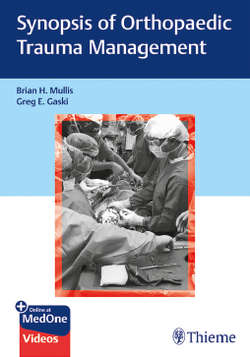Читать книгу Synopsis of Orthopaedic Trauma Management - Brian H. Mullis - Страница 16
На сайте Литреса книга снята с продажи.
IV. Clinical Rationale to Review Fracture Healing
ОглавлениеSections I and II surveyed “microscopic” physiology as it relates to fracture healing. We will now look in more detail at the macroscopic aspects.
A. Purpose of fracture management (four AO principles)
1. Reduce and fixate fractured bone/joint surface to restore anatomical relationships.
2. Provide absolute or relatively stable fixation based on the “personality” of the fracture, patient, or injury.
3. Preserve blood supply to soft tissue and bone by careful reduction techniques and tissue handling.
4. Safe and appropriately timed mobilization and rehabilitation of the injured extremity and entire patient.
B. At their core, principles 1 through 3 emphasize respect for fracture physiology. A theoretical reason to do a particular surgery is to alter the risk–benefit ratio of the natural history in a favorable way compared to a different procedure or nonoperative care.
1. Six typical outcomes for fractures in orthopaedic trauma patients are success, infection, malunion/nonunion, post-traumatic arthritis, joint stiffness/instability, and pain not otherwise specified (NOS).
2. Physiology of fracture healing is pertinent to the outcome of nonunion (see Chapter 7, Nonunion and Malunion, for further discussion on nounions). Nonunions have a profound negative effect on patient’s quality of life, far worse than many medical conditions (e.g., diabetes, acute myocardial infarction).
C. Multiple factors can contribute to impaired fracture healing (delayed union, nonunion).
1. Infection (see Chapter 6, Acute Infection Following Musculoskeletal Surgery, for more discussion on infection in orthopaedic trauma).
2. Biologic factors can be modifiable or nonmodifiable. Effort should be made, where appropriate, to optimize modifiable factors in favor of the physiology of fracture healing. See ▶Table 1.1 for a list of purported biologic factors at play in the physiology of fracture healing. Aberrations in these higher-level physiologic systems manifest as alterations in the “microscopic” processes.
Table 1.1 List of purported biologic factors at play in the physiology of fracture healing. While some risk factors are modifiable, others are not
| Biologic risk factors for non-union | |
| Nonmodifiable | Potentially modifiable |
| Polytrauma/multiple injury patient | Various medications (e.g., chemotherapy, steroids, anticonvulsants, anticoagulants) |
| Bone | NSAID use |
| Location within bone | Smoking |
| Fracture pattern | Malnutrition |
| Open fracture | Alcohol abuse |
| High-energy injury | Diabetes |
| Age | Vitamin D deficiency |
| Sex | Endocrine disorder (e.g., hyperthyroid/hyperparathyroid) |
| Prior irradiation | Time to weight bearing |
| Arthritis | Renal diseaseb |
| HIV | Liver diseaseb |
| Osteoporosisa | |
| Obesitya | |
| Abbreviations: HIV, human immunodeficiency virus; NSAID, nonsteroidal anti-inflammatory drugs.aNot likely sufficiently alterable during the course of normal healing. bMay not be modifiable depending on specific diagnosis and stage of disease. |
3. Mechanical factors: Improper surgical technique and mechanical stabilization can be detrimental to fracture healing physiology and increase nonunion rates. A multitude of chapters in this book are devoted to optimal nonoperative and operative procedures in fracture care. Two governing mechanical principles for fracture healing physiology are Perren’s strain theory and Wolff’s law.
a. Perren’s strain theory (▶Fig. 1.4): The strain (change in length with load/initial length) seen at the fracture site determines the type of tissue that forms.
b. Wolff’s law (▶Fig. 1.5): Bone will remodel in adaptation to the stress environment it experiences.
4. Orthopaedic fracture care interventions (nonoperative splints/casts/slings, percutaneous pinning, plating, intramedullary nailing, external fixation, arthroplasty, arthrodesis, and amputation) are limited in number. Understanding the physiology of fracture healing allows the surgeon to apply these methods to a given injury to promote a biologically favorable environment for bony union.
Fig. 1.4 Perren’s strain theory. The strain experienced at the fracture site determines the type of tissue formed. Strain is the ratio of elongation to initial length. Bone forms in low-strain environments.
Fig. 1.5 Wolff’s law. Bone models/remodels itself according to the mechanical environment it experiences. The image shows idealized stress distribution in the proximal femur subject to axial loading. The adjacent image is a computed tomography cut showing how trabecular bone is laid down in a strikingly similar pattern.
